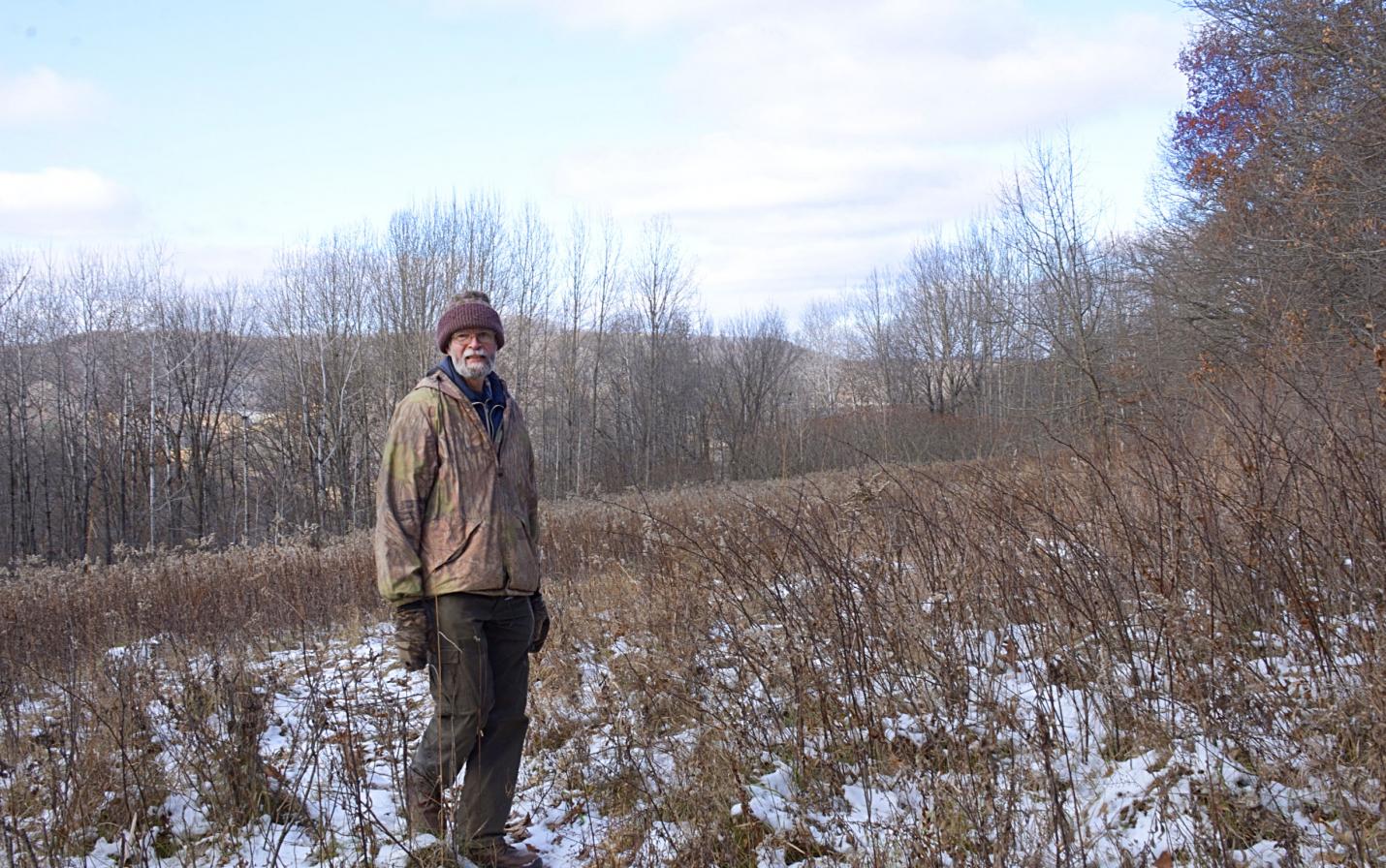
SPARTA, WI – Almost 190 species of birds have been seen from or have used the wooded ridges and draws of a 101-acre property in Monroe County in the last 43 years. And more than 150 species of wildflowers have been identified there, all noted by Lennie and Maria Lichter who have signed an agreement with the Mississippi Valley Conservancy that will permanently protect their land so it will always be available as habitat for the wild creatures that need it.
Some 33 species of mammals have been found there, including a rare fisher, pictured recently on a trail cam a quarter mile from the house.
Other lists kept by the couple include 10 kinds of reptiles and amphibians, 70 kinds of insects, 40 species of trees, seven species of native orchids and 10 kinds of ferns. Two threatened birds, Acadian Flycatcher and Cerulean Warblers have both nested on the property.
Lennie purchased the property in 1974 after a search for land in the Driftless Area. He had completed a “Big Year” of birding in all 48 contiguous states. But the Driftless was where he wanted to settle after growing up on a flatland farm in eastern Wisconsin, part of which has now been in the family for seven generations.
Lennie, 71, led a hike on the property on a recent sunny day with temperatures in the 20s and a light dusting of snow on the footpaths and game trails that lace the land. Tall and lean with a salt and pepper beard, he wore a camo jacket and a thick stocking cap. He paused frequently to describe the features of the land he has named – Sunset Pass where he looks into another watershed, Windy Hill where the view is across the valley toward another wooded ridge, and Wood Thrush Trail where thrush song on a summer evening rises through the old oaks on a north-facing slope. "Soon after moving in I decided that I would just let nature take its course and try to keep track of the birds, animals, plants and trees found here," Lennie said.
Maria came to the property in 1998. They met through Lennie's boss at Toro, in Tomah, where he worked for 30 years. She worked in the Toro office in Minneapolis where Lennie's boss frequently came for business. Learning of her interest in camping and nature, he encouraged an email connection between them that flourished to the extent the boss complained to Lennie about it. Lennie responded that he was just following orders.
Maria said that the old house where Lennie had been living wasn't "worth a dime" with its slanted floors and other problems. So they bought a prefabricated home and managed to get it down their narrow driveway to a site on a sunny slope above the creek.
Maria prepared ravioli for the hiking guests and, over lunch in their cozy home heated by a glowing wood stove, the couple described coping with the frightening power of the flood waters during a 9-inch rainfall this past August 28 and another in July 2017. And they recounted the wildlife they have seen outside their windows – a gray fox with kits, red fox, both long-tailed and least weasels, mink, bobcat, red-backed voles and, for Maria, a cougar.
It was Maria who first had the idea to work with MVC on the conservation agreement. "We understand it to be one way to preserve the land and wildlife as it is now and prevent development that would change and maybe destroy it forever," Lennie said.
Lennie had noted the buck rubs and other deer signs during the hike. He said that for many years he prohibited hunting, but about 15 years ago they found that some of the native wildflowers were disappearing and there was a browse line on many of the trees. "Now we allow a small group of friends to help us control the deer population..." That solved the problem, he added.
Lennie carried a laminated old aerial photo of the farm that showed the open fields when he bought the land. The fields are gradually returning to woods. Other changes to the land have happened more dramatically as a result of the floods that tore out their driveway culvert and deeply gouged and widened the bed of the small creek that passes close to their home.
They are concerned that the intense storms they have experienced the past two summers may be the new normal. Maria said she told the excavator who fixed the driveway the past two years that she was setting aside money in the budget for his services.
But they will continue adding native plants to join others they have introduced such as the whorled milkweed, trout lily and turtlehead and continue their search for new bird species visiting or nesting. "There seems to be a new plant species found almost every year," according to Lennie. All will be added to their phenology notebooks – their continuing saga of changes on the land.
“When landowners give such care to the land and then go the extra mile to protect it for the future, they are making a generous gift to the broader community for the benefit of us all,” said Carol Abrahamzon, executive director at the Conservancy. Everyone wins when the land is allowed to go on protecting wildlife as it has for thousands of years, she said.
Lennie and Maria say they are hopeful that other like-minded landowners in the neighborhood will join them in protecting their land for future generations.